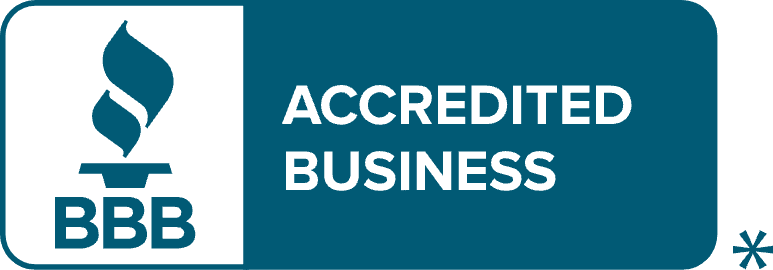Investing in Litigation Finance and Structured Settlements with a Self-Directed IRA
Published on October 14, 2025
Owners of a self-directed IRA (SDIRA) know they can provide unsecured and secured loans through their account, but they may not realize they can also invest in litigation finance and funding for legal settlements through a non-recourse advance. They can also invest in structured settlements (compensation awarded by the court to plaintiffs) and receive long-term passive income by purchasing the rights to future payments.
In this article, we look at these two types of alternative assets that arise from legal transactions.
What is litigation financing?
Litigation financing (also called third-party funding) is when the owner of a SDIRA provides a non-recourse cash advance to fund legal cases. This advance supports the plaintiff or plaintiff’s attorney/law firm in exchange for a portion of the final settlement (the court award).
The upfront capital provided through litigation financing enables individuals to pursue justice when they otherwise cannot afford the expenses of mounting a lawsuit against another party. It also enables attorneys to bring justice to more people who have been harmed.
This is a passive investment and as a non-recourse transaction, the investor only makes money if the case is successful. In other words, there is no recourse for getting back the investment if the case is lost. Therefore, the risk is relatively high but there is potential for high returns if the case is won; those returns are usually based on a percentage of the damages or settlement or a multiple of the initial investment.
Litigation funding can be used in many types of cases, from commercial litigation to class action and mass tort lawsuits, personal injury claims, and intellectual property disputes. Examples of litigation financing are pre-settlement funding in personal injury lawsuits, providing “bridge funding” to plaintiffs who are waiting for their settlement to pay out, or financing a law firm or attorney who is representing the claimant.
Making the investment
All types of self-directed IRAs can be used for this alternative asset, from Traditional and Roth IRAs to solo 401(k)s, SEP IRAs, and SIMPLE IRAs. The investment may be made in a single case or portfolio of legal cases through several routes: a funding group, online platform, or hedge fund that specializes in litigation financing. Litigation funding can be for a single case or a portfolio of multiple cases (which spreads the risk). As with any self-directed investment, the income derived from the legal settlement goes directly to the SDIRA.
- Accredited investors can invest in litigation funding through an online finance platform, and directly fund individual or multiple cases through the platform’s marketplace after signing a non-disclosure agreement and reviewing all available cases for investment.
- Litigation funding companies offer legal expertise and select cases that look most promising for success and manage the portfolio of lawsuits.
- There are also hedge funds that invest in litigation financing. The fund managers choose the cases and handle the due diligence and investment structuring.
NOTE: Although investors can provide funding at any point in a lawsuit, investing in a late-stage lawsuit, in which the case is well established, increases the potential for a predictable return.
Investing in structured settlements
A settlement is compensation awarded to a plaintiff in a lawsuit, usually a worker’s comp, medical malpractice, or personal injury case. The “structure” is the arrangement of how that sum is paid over a period of years, like an annuity (as opposed to one lump sum). A structured settlement is set up by the court and is usually paid out by an insurance company.
While some plaintiffs like the recurring steady income over time, others may prefer to “cash out” their future payments and sell their future income stream at a discounted lump sum amount. Investors with self-directed IRAs can participate in this transaction by having the IRA purchase the rights to those future payments at less than their total value.
The original recipient gets cash in advance (perhaps needed to pay off debt, cover urgent bills, or other financial needs) although a lesser amount than originally scheduled. The SDIRA receives steady passive income because the payment schedule continues according to the original setup—and that income will be more than the investment amount. Plus, the payments usually come from a highly rated insurance company, so there is little risk involved to the investor.
Making the investment
In general, investors work with brokers or companies that specialize in structured settlement transactions. These middlemen connect buyers and sellers and facilitate the legal processes involved.
As with any self-directed investment, account owners should thoroughly research and understand this market, the payment schedule and payment amounts, and the discount arrangement for the purchase. In addition, it’s important to understand any state and federal regulations about structured settlement investments, and vet the insurance company that is making the payments to further mitigate risk.
NOTE: Before investing in a structured settlement, account owners are well advised to consult a trusted tax professional to make sure this alternative asset does not trigger unrelated business taxable income (UBTI), as there are certain circumstances in which UBTI may apply.
Contact Next Generation with your questions
Although structured settlement investments have been around for a long time, litigation financing is a newer and growing trend in alternative asset investing. While our team cannot endorse any type of investment nor give investment advice, we are here to answer your questions about the many types of alternative assets allowed in a self-directed IRA. Contact us at NewAccounts@NextGenerationTrust.com or 888.857.8058 to find out more.
Back to Blog


